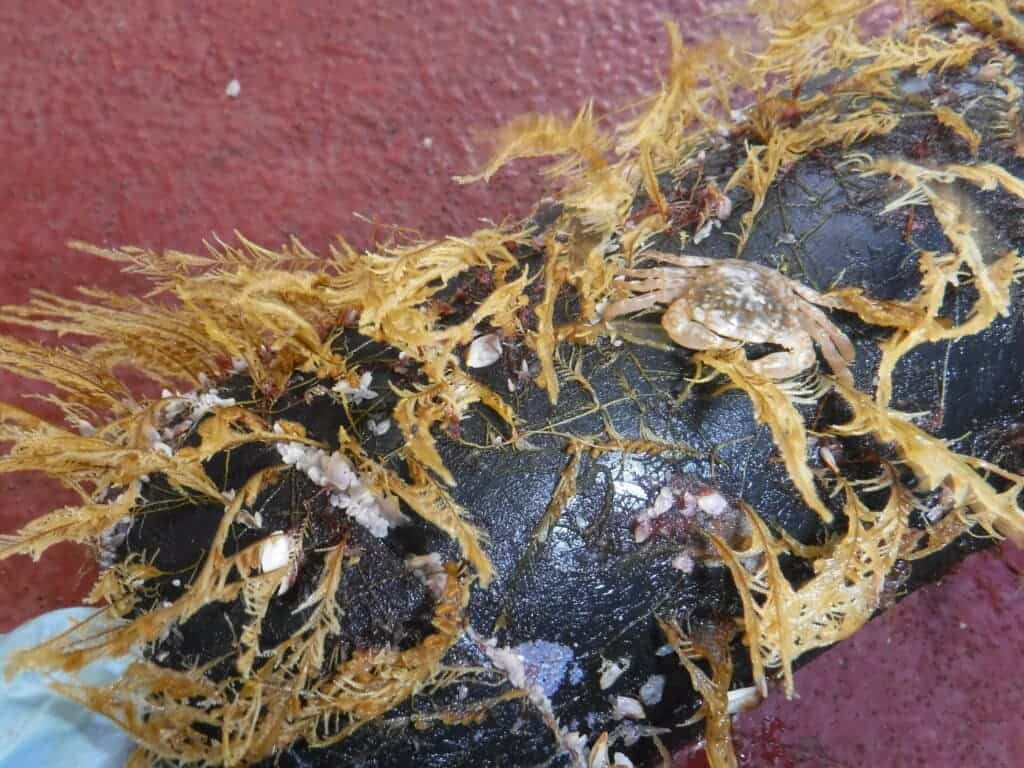Plastic pollution is creating whole environments on the high seas, according to new research.

Coastal species of plants and animals are colonizing the open ocean on the backs of plastic debris, researchers report. This is creating whole new, and previously impossible, communities on the surface of the open ocean. The findings put into perspective just how much of an impact pollution can have on the environments around us, and showcase how the oceans, specifically, are changing due to human activity.
Life in plastic
“The issues of plastic go beyond just ingestion and entanglement,” said Linsey Haram, lead author of the article and former postdoctoral fellow at the Smithsonian Environmental Research Center (SERC). “It’s creating opportunities for coastal species’ biogeography to greatly expand beyond what we previously thought was possible.”
Researchers have termed these communities “neopelagic” — roughly meaning ‘new oceanic’. They develop around patches (or ‘gyres’) of garbage that form in areas where oceanic currents push plastic pollution from coastal regions. Here, veritable islands of plastic float over thousands of square miles of ocean surface. Although they do not lack in large pieces of plastic, a large part of the material that makes up these islands consists of microplastic particles, which are too small to be seen by the naked eye. Other debris like fishing nets, buoys, and bottles help to hold everything together. The single largest such patch today sits in the North Pacific Subtropical Gyre and contains an estimated 79,000 metric tons of trash.
Organisms from the coast seem to hitchhike a ride towards the open seas on these larger pieces of plastic, new research reveals, where they start a whole new life.
Our first clues about neopelagic communities started surfacing in the wake of the 2011 Japanese tsunami when researchers found almost 300 coastal species in the debris this wave brought to the coast from the open ocean. However, direct sightings were extremely rare before now.
For the study, Haram worked together with the Ocean Voyages Institute, a nonprofit organization that works to remove plastic pollution from the ocean using sailing ships. They also enlisted the help of Jan Hafner and Nikolai Maximenko, two oceanographers at the University of Hawai’i at Manoa, who created a model that could predict where plastic was most likely to accumulate in the North Pacific Subtropical Gyre. The organization’s use of sailing ships ensured that the whole expedition would be as environmentally-friendly as possible.
During 2020, the Ocean Voyages Institute team collected 103 tons of plastic and associated debris from the North Pacific Subtropical Gyre. Some of this was sent to SERC’s Marine Invasions Lab, where Haram and her team looked at the species that colonized them. Among these samples, they found several coastal species including anemones, hydroids, and shrimp-like amphipods which were not merely surviving, but seemed to thrive. This represents a very significant shift in the ecology of the open ocean.
“The open ocean has not been habitable for coastal organisms until now,” said SERC senior scientist Greg Ruiz, who heads the Marine Invasions Lab where Haram worked. “Partly because of habitat limitation—there wasn’t plastic there in the past—and partly, we thought, because it was a food desert.”
For now, the findings show that plastic build-up in the ocean is providing a platform for coastal species to use as a habitat, but where exactly they are finding food is still up for debate. Further research will be needed to determine the details of these novel ecosystems. Two possibilities are that ocean gyres already act as hotbeds for biologic activity, and these species are capitalizing on existing food sources, or that the plastic bodies themselves are attracting organisms, which coastal species then consume.
In the long-term, the communities that live on plastic islands could definitely have an impact on the wider environment around them. We don’t even know how common such plastic-borne communities are, at this point. The team plans to understand and quantify this impact in the future. One of their chief concerns is to see whether coastal organisms can act like invasive species in the wider oceanic ecosystem.
The paper “Emergence of a neopelagic community through the establishment of coastal species on the high seas” has been published in the journal Nature Communications.


